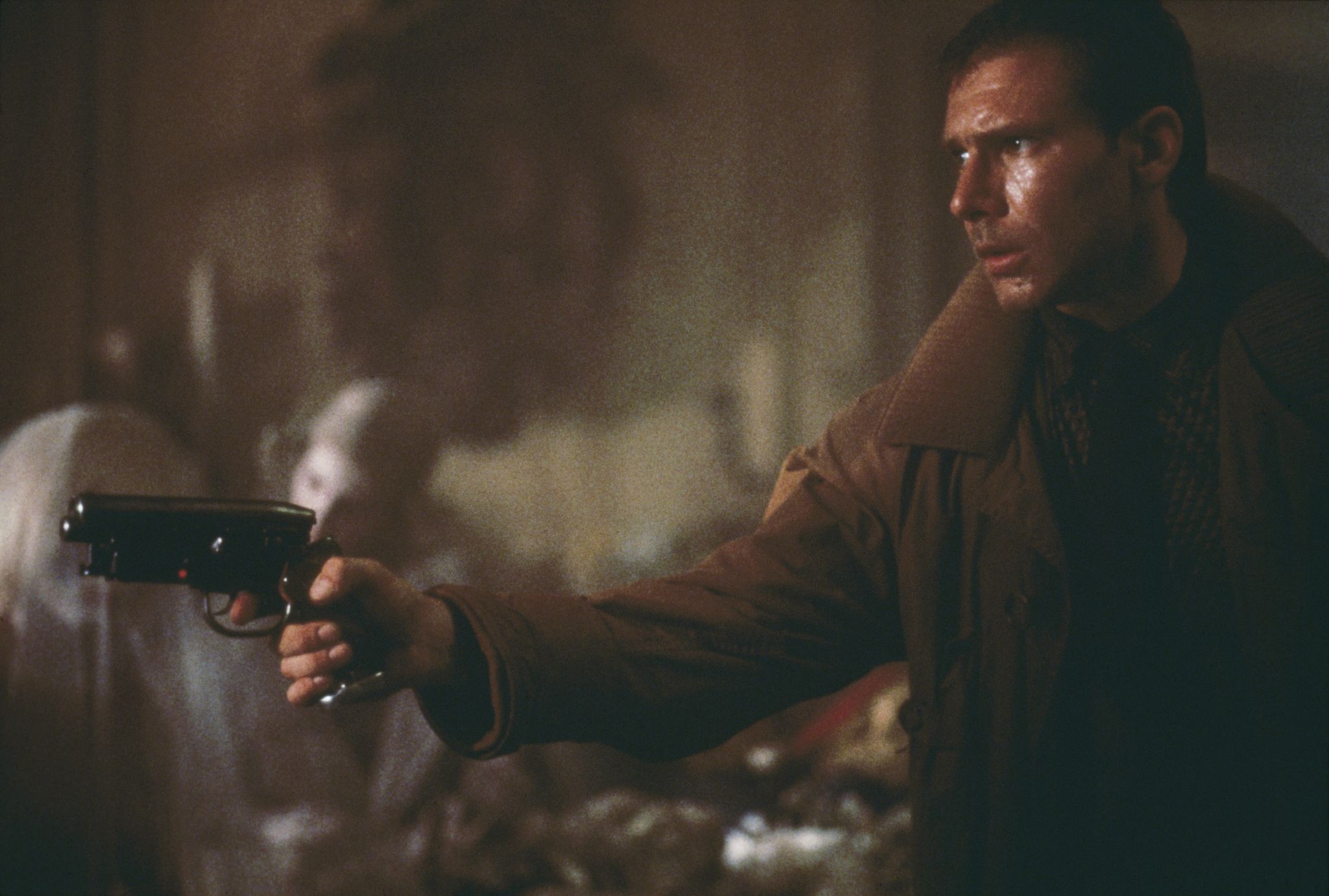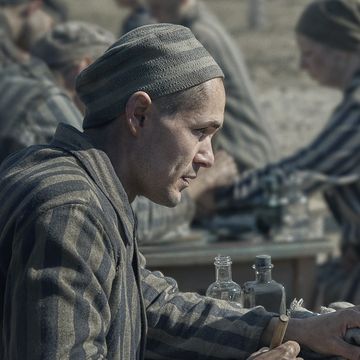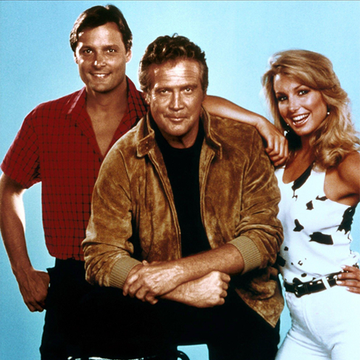Los Angeles, 2019. Bursts of flame erupt over a city bathed in perpetual twilight. From the pyramid-like offices of the Tyrell Corporation, we see an eye in close-up, the lights of the city reflected in it. Whether this eye is human is yet to be determined. But, ultimately, in Ridley Scott’s 1982 sci-fi masterwork, the eye of the beholder is irrelevant. In the world of Blade Runner the future is a hardscrabble hellscape with no escape. Is it any wonder, then, that Rutger Hauer’s band of rogue replicants – humanoid worker robots designed to blend in with the flesh and blood population – have decided to go rogue, pursuing a semblance of agency in the last days of their pre-programmed lives?
Based on Philip K. Dick’s 1968 novel Do Androids Dream Of Electric Sheep, Scott’s film created a world so rich, so dirty and wet and worn out, so visually stunning, that imitation was an inevitability. Less gym-bro than The Terminator, less wacky than Terry Gilliam’s Brazil, and less all-out apocalyptic than Mad Max, Blade Runner arguably defined not just 1980s science fiction, but in the forty years since its initial release, sci-fi films in general. From Ghost In The Shell, to Total Recall and Minority Report and even Black Panther, Blade Runner is owed a debt of gratitude.
Working from a formula he perfected in 1979’s Alien, Scott brought his world of grimy industry and neon-lit shadows, rogue androids and put-upon protagonists to California, swapping Alien’s body horror for the police procedural. Granted, Deckard isn’t Ellen Ripley, but in its portrayal of the battered and bruised detective battling against the system, Blade Runner is a Chinatown of the future. That it was only Scott’s third film as director makes it all the more impressive. (As an aside, has Harrison Ford’s three film run of The Empire Strikes Back (1980), Raiders Of The Lost Ark (1981), and Blade Runner (1982) ever been beaten?).
Famously, the film was a critical and commercial flop in the U.S. with VHS sales and endless re-edits eventually leading to its cult status. (In 2004, it was even voted as the best science fiction film of all time by a panel of global scientists). Today, it’s difficult to picture a sci-fi film that doesn’t play homage. Would HBO’s Westworld have updated its 1973 film version so successfully and stylishly without Blade Runner paving the way both visually and in terms of its musings on free will? And, decades before Elon Musk looked set to take over the world, Blade Runner’s Tyrell Corporation (and indeed, Alien’s Weyland-Yutani) was inspiring evil empires from Resident Evil’s Umbrella Corporation to RoboCop’s Omni Consumer Products and The Terminator’s Cyberdyne Systems.
Even Ridley Scott’s own work has drawn influence from Blade Runner. His Alien prequels blend the DNA of the two franchises so well fans have speculated about a shared Blade Runner-Alien universe. Scott’s 1989 police actioner Black Rain can arguably be seen as a less successful remake, sending detectives into a nighttime, neon-lit, rain drenched Japan (the world of Blade Runner was partially inspired by Kyoto).
Often imitated but never fully replicated is Vangelis’ Golden Globe nominated synth score. Recorded on an Yamaha’s CS-80 synthesizer, these ambient textures were as vital to creating the universe of the film as the set design (which drew inspiration from Edward Hopper paintings and Fritz Lang’s Metropolis), costume, lighting and Orwellian ‘Cityspeak’ language invented for the film.
In terms of performances, there’s an argument that Harrison Ford always plays Harrison Ford, but here he loses the swagger of Han Solo and the self assuredness of Indy to become a world-beaten man (replicant?) who’d really rather be at home drinking whiskey from beautiful futuristic tumblers. As replicant and love interest Rachael, Sean Young is given little to do, but still manages to make the character live and breathe.
But as any Blade Runner fan knows, it’s Rutger Hauer’s replicant anti-hero Roy Batty who steals the show. Not only does Batty show how cool bleached hair, a grey t-shirt and a leather trench-coat can look, he’s a synthetic being of dualities. One moment he’s menacingly pushing nails through his ailing robot hands, the next he’s cradling a dove whilst delivering a heartfelt monologue on the fleeting nature of existence. As the replicant who has seen things us people wouldn’t believe, Batty delivers one of the greatest speeches in cinematic history in his ‘Tears in rain’ soliloquy. Hauer himself took a hands-on approach to the speech, amending and cutting back screenwriter David People’s original words. Reportedly, after the first take some crew members were moved to tears themselves.
Visually and sonically assured, intelligent and moody, there is much to be admired in Blade Runner. But why has its legacy endured to such a degree? Perhaps in its gloomy portrayal of environmental catastrophe, social divide and oppressive authority we recognise our own world. Or perhaps it’s because, despite all of its foreboding, Blade Runner offers a chance of hope. Hope of a love between two people not meant to love. Hope of freedom, however impossible. A hope as fragile as an origami unicorn, maybe. A hope as beautiful as C-beams glittering in the dark, and as fleeting as tears in rain. Blade Runner is not a film with easy answers. And maybe that is why, forty years later, we’re still remaking it, exploring it, pulling it apart and holding it up to the light.














